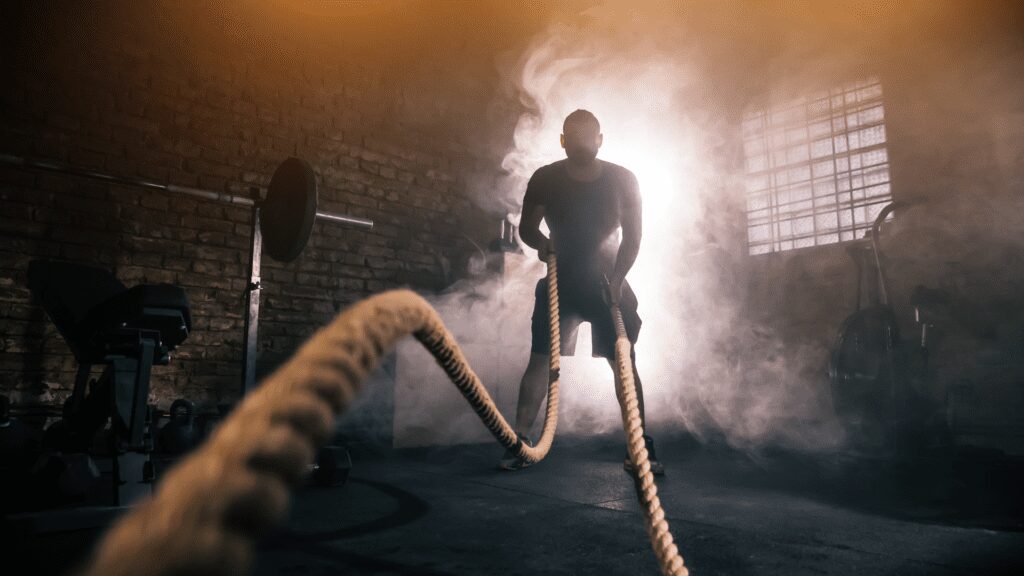What exercise burns the most calories?
Which exercise burns the most calories? It’s the question on everyone’s lips. The holy grail of fitness. The secret sauce to shedding those pounds. But it’s not about finding a magic bullet. It’s about sweat. It’s about grit. It’s about pushing your body to its limits and then some.
Because the truth is, there’s no one-size-fits-all answer. The calorie-burning king might be different for you, for me, for the guy doing bicep curls in the corner of the gym. So let’s dive in. Let’s explore. Let’s shatter some myths and bring on the burn. Ready to ignite your fitness journey?

Let’s find your ultimate calorie torcher.
Understanding the Calorie-Burning Power
When it comes to burning calories, not all exercises are created equal. We all want to know which activity helps us burn the most calories to achieve our fitness and weight loss goals. Running stands out as a top contender, as it engages multiple muscle groups and elevates the heart rate significantly. But there’s more to the story than just that.
Running – A Calorie-Burning Champion
Running, the classic calorie-burning exercise, can burn a substantial amount of calories per minute. The harder you push, the more you burn. Running uphill, for example, increases the intensity and can be an efficient calorie-burning exercise. It seems like a logical choice for anyone looking to lose weight. But there are other considerations.
Beyond Running – Exploring Other Efficient Calorie-Burning Exercises
While running burns calories and keeps you moving, it’s not the only magic solution. Whole-body exercises that involve weight-bearing movements can also have a significant impact. Strength training, for instance, helps build muscle mass, which plays a crucial role in increasing calorie burn even at rest. The more muscle mass you have, the more calories you burn throughout the day.
Finding the Right Balance
To maximize calorie-burning potential, it’s essential to strike a balance between cardio and strength training. Cardio exercises help torch calories during the workout, while strength training builds muscle mass, leading to long-term calorie-burning benefits. Incorporating both into your weekly routine can boost calorie burn and improve overall fitness.
Exercising Outside the Gym
Exercise doesn’t have to be confined to the gym. In fact, various outdoor activities can be excellent calorie burners. Whether it’s hiking, cycling, or even yoga, these activities engage different muscle groups and can help you achieve your fitness goals while enjoying the great outdoors.
Diet’s Role in Calorie Burning
While exercise is crucial for burning calories, we can’t ignore the role of diet. The energy required to burn one gram of water by one degree Celsius is a calorie. The calories we consume through food provide the energy our bodies need for pumping blood, taking breaths, and performing other essential functions.
Understanding BMR’s Impact
Basal Metabolic Rate (BMR) is the number of calories your body needs to perform basic functions at rest. Increasing your muscle mass through strength training can raise your BMR, resulting in more calories burned even when you’re not working out.
The Role of Yoga in Calorie Burning
While yoga might not be as intense as running, it plays an important role in your fitness journey. Yoga can be a powerful tool for weight loss and calorie burning. Certain yoga styles, such as power yoga, can provide a challenging workout that keeps you moving and burning calories.
The Muscle-Calorie Connection
You’ve heard it before, and it’s true – muscles are your calorie-burning engines. The more muscle mass you have, the more calories you burn, even at rest. But let’s dive deeper into the science behind this phenomenon.
Muscle vs. Fat – The Calorie-Burning Battle
Muscle tissue is metabolically active, meaning it requires more energy to sustain itself than fat tissue. This means that the more muscle mass you have, the more calories you burn during both exercise and daily activities.
The Afterburn Effect
After intense exercise, your body’s oxygen consumption remains elevated as it works to repair muscle fibers and replenish energy stores. This phenomenon, known as excess post-exercise oxygen consumption (EPOC) or the afterburn effect, contributes to additional calorie burn even after your workout.
Combating the Myth
It would seem logical to assume that cardio exercises, which burn calories during the activity, are the most effective for weight loss. However, focusing solely on cardio without incorporating strength training can lead to muscle loss. As muscle mass decreases, your overall calorie burn decreases too.
Strike the Right Balance
To maximize calorie burning, it’s crucial to strike a balance between cardiovascular exercises and strength training. Cardio helps burn calories during the workout, while strength training builds and preserves muscle mass, leading to long-term calorie-burning benefits.
The Age Factor
As we age, our muscle mass tends to decline naturally. This can lead to a decrease in calorie burn and potentially contribute to weight gain over time. Incorporating regular strength training into your routine can combat this natural decline and help maintain a healthy metabolism.
